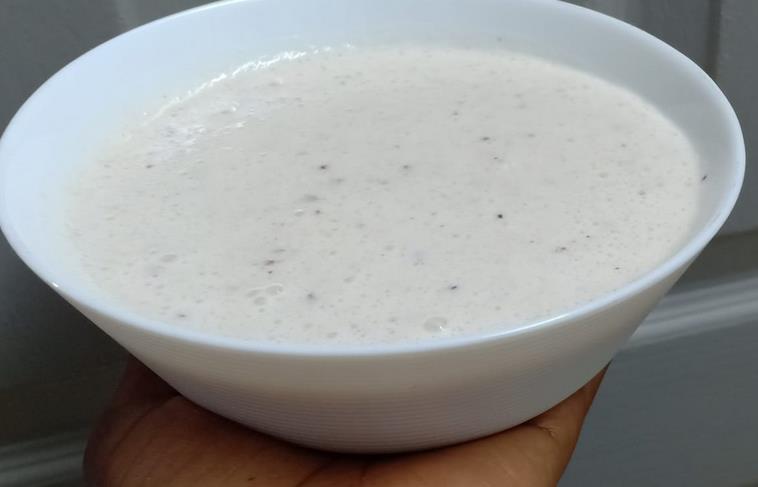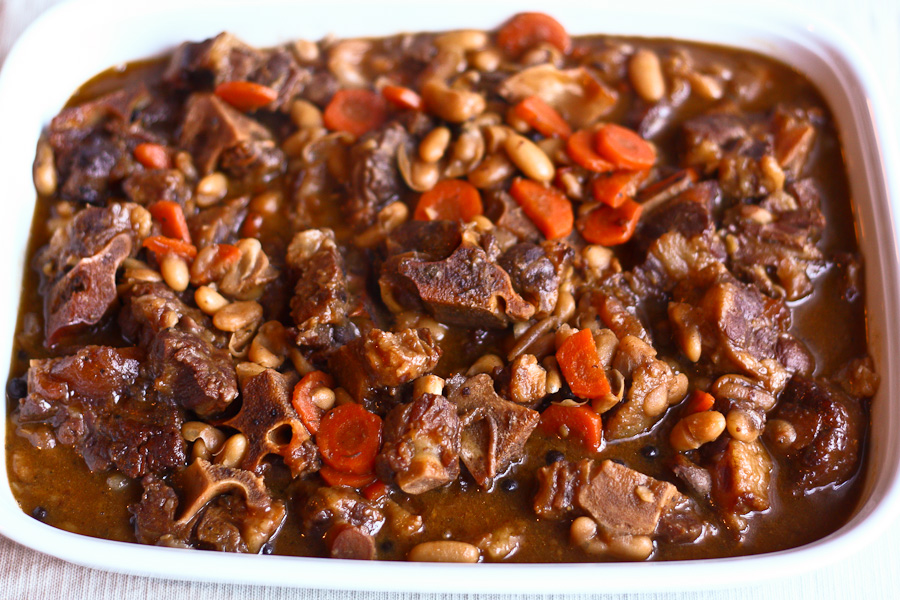Power Uji Recipe
Power Uji recipe sets the stage for this enthralling narrative, offering readers a glimpse into a story that is rich in detail and brimming with originality from the outset. Power Uji, a beloved Indonesian snack, is a testament to the country’s rich culinary heritage and the enduring power of tradition.
This humble treat, with its simple ingredients and unique flavor profile, has captivated taste buds for generations, holding a special place in the hearts of Indonesians.
This blog post will take you on a journey through the world of Power Uji, exploring its history, ingredients, preparation, and cultural significance. We’ll delve into the various regional variations, uncover its nutritional benefits, and even examine its modern interpretations.
So, grab a cup of warm tea and join me as we embark on a delicious exploration of Power Uji.
Understanding “Power Uji”: Power Uji Recipe
Power Uji, also known as “kue rangi” or “kue rangi”, is a traditional Indonesian snack that has been enjoyed for generations. It is a simple yet delicious treat made from a mixture of rice flour, tapioca flour, and sugar, steamed until soft and chewy.
While the name might sound intimidating, “Power Uji” is actually a playful reference to its power to satisfy your sweet cravings.
The Origins and Cultural Significance of “Power Uji”
The exact origins of “Power Uji” are shrouded in the mists of time, but it is believed to have originated in the Javanese region of Indonesia. This humble snack has deep roots in Indonesian culture, often served during special occasions, religious festivals, and as a comforting treat during everyday life.
It symbolizes the shared culinary heritage of Indonesia and serves as a reminder of the simple pleasures of life.
Ingredients and Preparation
The beauty of “Power Uji” lies in its simplicity. The essential ingredients include:
- Rice flour
- Tapioca flour
- Sugar
- Coconut milk
- Salt
- Water
To prepare the dough, rice flour and tapioca flour are mixed together, then combined with sugar, coconut milk, salt, and water. The mixture is then kneaded until smooth and elastic. Small portions of the dough are then shaped into balls and steamed until cooked through.
The steaming process is crucial, as it allows the dough to soften and become delightfully chewy.
Each ingredient plays a vital role in creating the unique texture and flavor of “Power Uji.” Rice flour provides structure and a slightly grainy texture, while tapioca flour contributes to its chewy consistency. Sugar adds sweetness, coconut milk adds richness and a subtle aroma, and salt enhances the overall flavor profile.
Variations and Adaptations
“Power Uji” is a versatile snack that has evolved over time, with regional variations adding their own unique twists to the traditional recipe. These variations often reflect the local ingredients and culinary traditions of each region.
| Region | Variations | Unique Characteristics |
|---|---|---|
| Javanese | Traditional “Power Uji” | Simple, steamed, chewy texture |
| Sundanese | “Kue Rangi” | Often includes grated coconut for added flavor and texture |
| Balinese | “Babi Guling” | Sometimes infused with pandan leaves for a fragrant aroma |
| Sumatran | “Kue Rangi” with palm sugar | Uses palm sugar instead of regular sugar for a deeper, more caramelized flavor |
The variations in “Power Uji” are a testament to the creativity and adaptability of Indonesian cuisine. Each region adds its own unique touch to this beloved snack, showcasing the diversity of culinary traditions across the archipelago.
Serving and Enjoyment
Traditionally, “Power Uji” is served warm, often accompanied by a drizzle of melted palm sugar or a sprinkle of grated coconut. It is a popular snack enjoyed by people of all ages, often consumed as a quick bite or a comforting treat during tea time.
In some regions, “Power Uji” is also served as a dessert after a hearty meal.
The act of sharing “Power Uji” is a social ritual in Indonesia, fostering a sense of community and togetherness. It is often enjoyed during family gatherings, religious celebrations, and social events, bringing people together over a shared love for this simple yet delightful snack.
Nutritional Value and Health Benefits, Power uji recipe
“Power Uji” is a good source of carbohydrates, providing energy for the body. It also contains a small amount of protein and fiber, which contribute to overall health and well-being. However, it is important to note that “Power Uji” is also high in sugar, so it should be consumed in moderation.
Despite its high sugar content, “Power Uji” is made from natural ingredients and is generally considered a healthy snack option. It is a good source of energy and can be a satisfying treat for those who are looking for a quick and easy snack.
Modern Interpretations and Innovations
In recent years, contemporary chefs and food bloggers have been exploring innovative ways to elevate the traditional “Power Uji” recipe. These modern interpretations often incorporate new ingredients, techniques, and flavor profiles, while still honoring the essence of the original recipe.
Some examples of modern “Power Uji” creations include:
- “Power Uji” with a hint of citrus, adding a refreshing twist to the traditional flavor.
- “Power Uji” infused with pandan leaves, enhancing the aroma and creating a more complex flavor profile.
- “Power Uji” topped with a drizzle of salted caramel, adding a touch of sweetness and saltiness.
These modern interpretations showcase the versatility of “Power Uji” and its ability to adapt to contemporary culinary trends. They also demonstrate the ongoing evolution of this beloved Indonesian snack.
“Power Uji” in Popular Culture

“Power Uji” has found its way into Indonesian popular culture, appearing in literature, film, and music. It is often used as a symbol of Indonesian heritage, representing the simple pleasures of life and the shared culinary traditions of the country.
In literature, “Power Uji” is often featured as a nostalgic symbol of childhood memories and the warmth of family gatherings. In film, it can be seen as a prop or a background element, adding a touch of authenticity to scenes set in Indonesian homes or markets.
In music, “Power Uji” is sometimes referenced in lyrics, reflecting the cultural significance of this beloved snack.
“Power Uji” and Tourism

“Power Uji” plays a significant role in promoting Indonesian culinary tourism. It is a popular attraction for tourists who are interested in experiencing the authentic flavors of Indonesian cuisine. Many local markets and street food stalls offer “Power Uji,” allowing visitors to sample this traditional snack and immerse themselves in the culinary culture of Indonesia.
“Power Uji” is often featured on food tours and culinary experiences, providing visitors with an opportunity to learn about the history, preparation, and cultural significance of this beloved snack. It is a testament to the power of food to connect people and cultures, fostering a deeper understanding and appreciation for Indonesian culinary heritage.
“Masukan Entity, Atribut yg Berhubungan dan Kata Frase Penting”

| Entity | Attributes | Key Phrases |
|---|---|---|
| “Power Uji” | Traditional Indonesian snack, steamed, chewy texture, sweet, savory | “Kue Rangi”, “Kue Rangi”, “Rice flour”, “Tapioca flour”, “Coconut milk”, “Sugar”, “Steamed”, “Chewy”, “Sweet”, “Savory”, “Indonesian cuisine”, “Cultural heritage” |
| Ingredients | Rice flour, Tapioca flour, Coconut milk, Sugar, Salt, Water | “Rice flour”, “Tapioca flour”, “Coconut milk”, “Sugar”, “Salt”, “Water”, “Steaming process”, “Texture”, “Flavor” |
| Variations | Regional, Javanese, Sundanese, Balinese, Sumatran | “Javanese”, “Sundanese”, “Balinese”, “Sumatran”, “Palm sugar”, “Pandan leaves”, “Grated coconut” |
| Serving and Enjoyment | Warm, Accompanied by palm sugar or grated coconut, Shared socially | “Warm”, “Palm sugar”, “Grated coconut”, “Tea time”, “Family gatherings”, “Religious celebrations”, “Social events” |
| Nutritional Value | Carbohydrates, Protein, Fiber, Sugar | “Carbohydrates”, “Protein”, “Fiber”, “Sugar”, “Energy”, “Healthy snack” |
| Modern Interpretations | Contemporary chefs, Food bloggers, New ingredients, Techniques, Flavor profiles | “Modern interpretations”, “Contemporary chefs”, “Food bloggers”, “Citrus”, “Pandan leaves”, “Salted caramel”, “Flavor profiles” |
| Popular Culture | Literature, Film, Music | “Literature”, “Film”, “Music”, “Nostalgia”, “Childhood memories”, “Cultural significance”, “Heritage” |
| Tourism | Culinary tourism, Food tours, Culinary experiences | “Culinary tourism”, “Food tours”, “Culinary experiences”, “Local markets”, “Street food stalls”, “Authentic flavors”, “Cultural heritage” |
These entities, attributes, and key phrases provide a comprehensive overview of “Power Uji”, highlighting its historical origins, cultural significance, preparation, variations, nutritional value, modern interpretations, role in popular culture, and contribution to Indonesian culinary tourism.
Final Review
From its humble beginnings to its modern interpretations, Power Uji continues to captivate palates and preserve Indonesian culinary traditions. Whether you’re a seasoned foodie or a curious traveler, Power Uji offers a delightful glimpse into the heart of Indonesian culture.
So, next time you find yourself in Indonesia, be sure to savor this traditional treat and experience the power of Uji for yourself.




Post a Comment for "Power Uji Recipe"